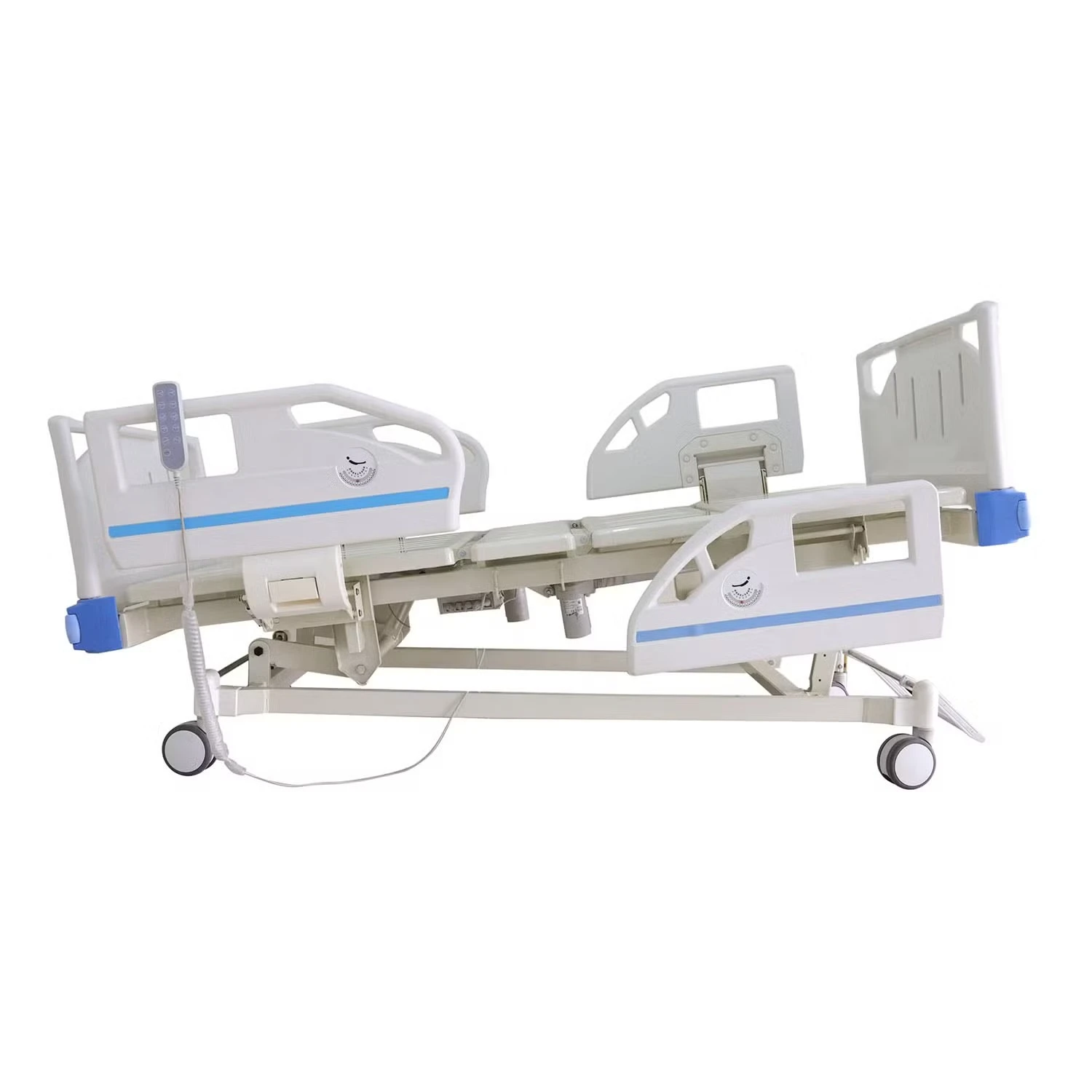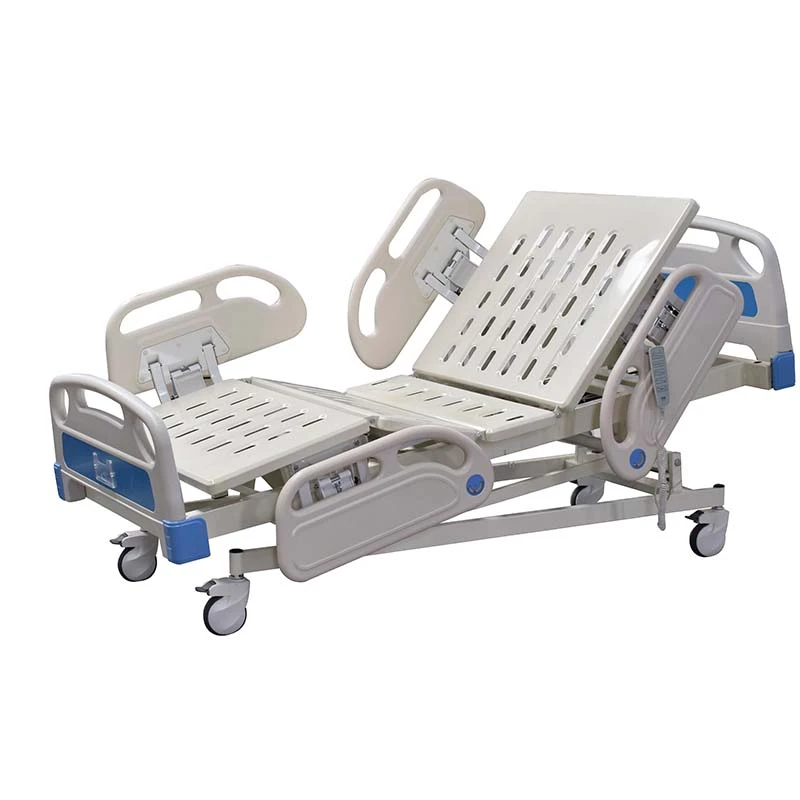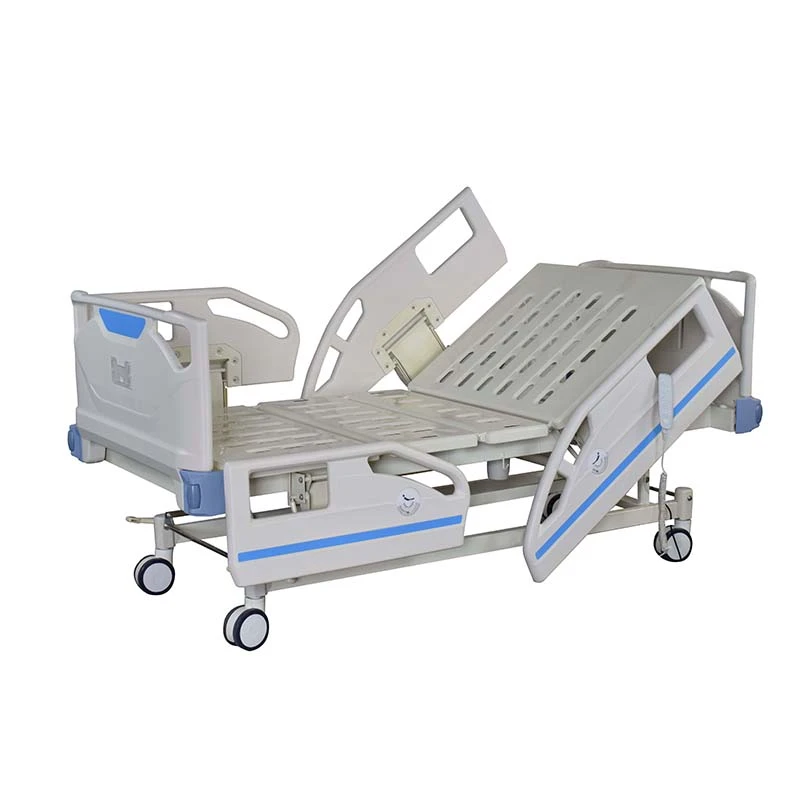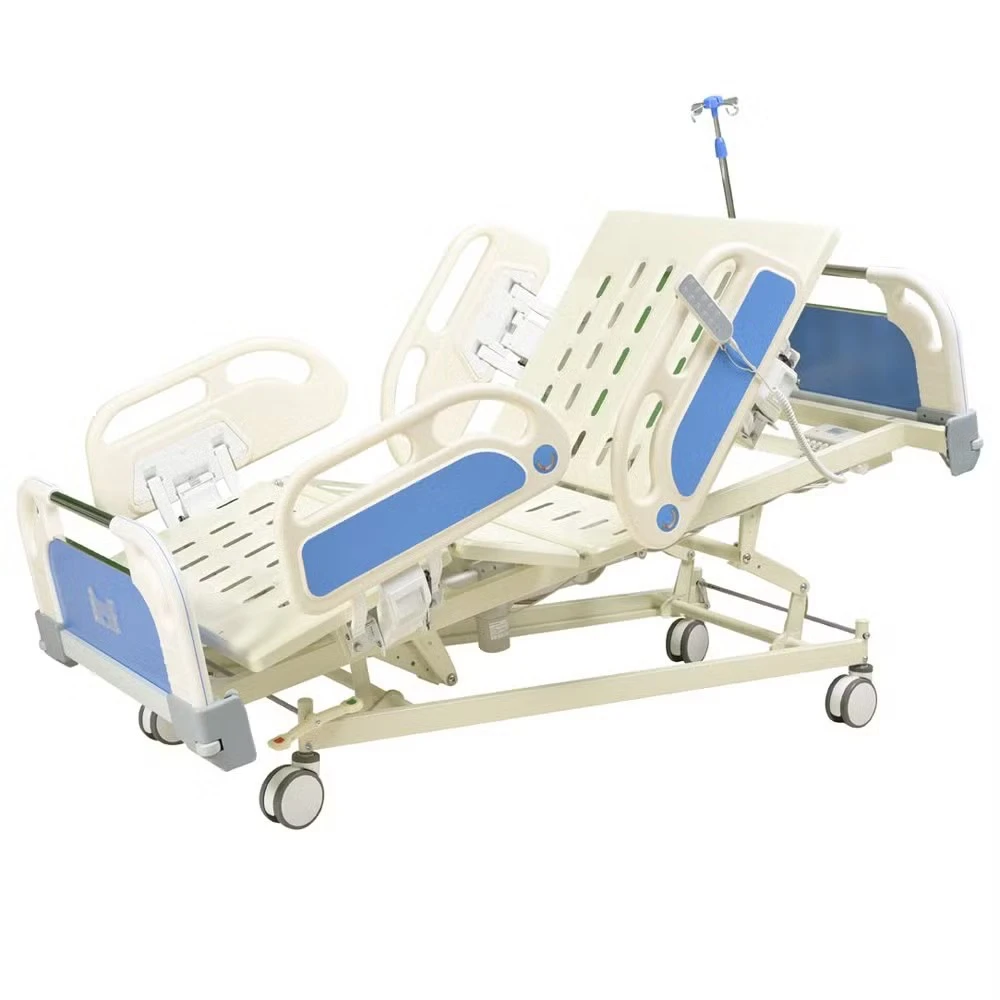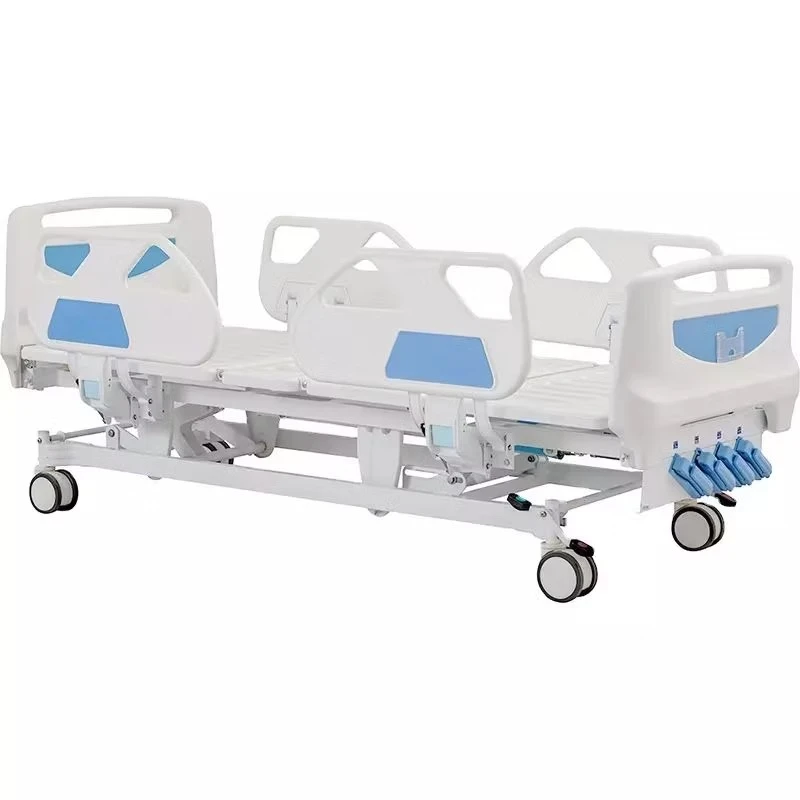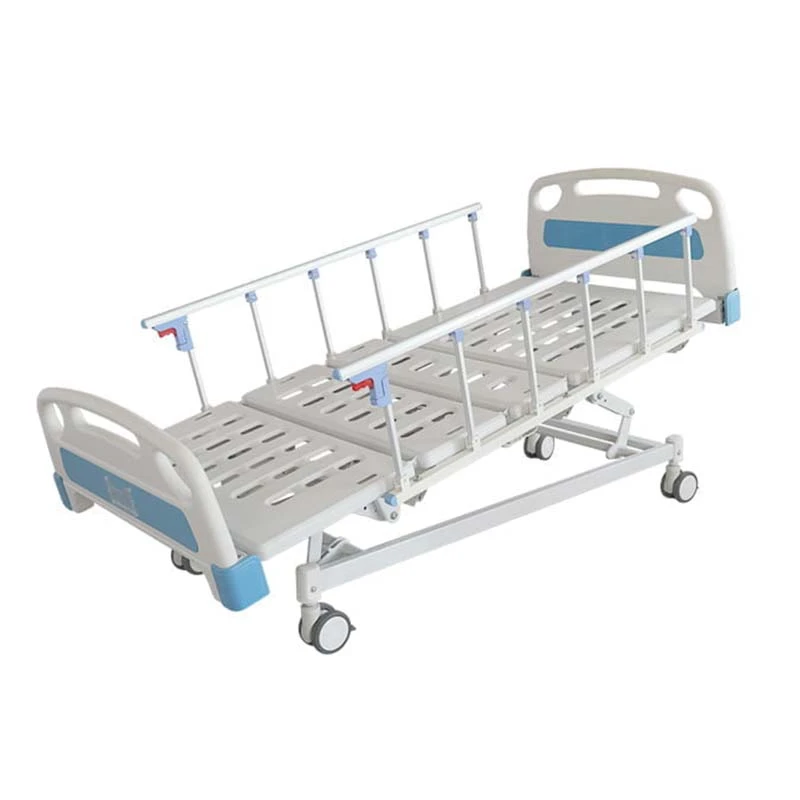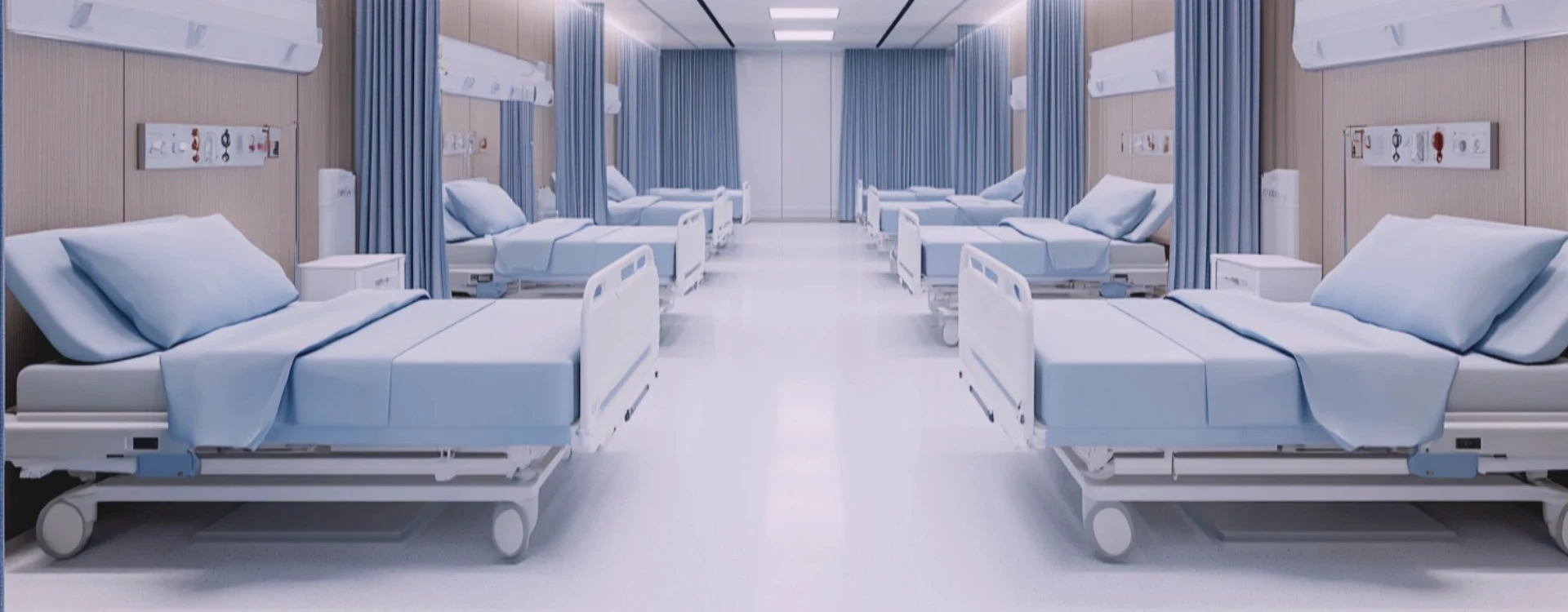
A 5-function hospital bed is an advanced medical bed designed to provide enhanced patient care, comfort, and convenience for both patients and healthcare providers. These beds offer five essential adjustments: height adjustment, backrest adjustment, knee-rest adjustment, Trendelenburg position, and reverse Trendelenburg position. The height adjustment allows medical staff to raise or lower the bed for easy patient access and caregiving. The backrest adjustment helps patients sit up, supporting respiratory function and reducing discomfort. The knee-rest adjustment improves circulation and relieves pressure on the lower body. The Trendelenburg position tilts the bed downward, improving blood circulation and assisting in certain medical treatments, while the reverse Trendelenburg position helps reduce pressure on the lungs and enhances breathing. Many models come with electric control panels, allowing patients to adjust their positions independently or enabling caregivers to make adjustments with minimal effort. Side rails provide safety by preventing falls, and lockable caster wheels offer mobility while ensuring stability. Some beds also include built-in weighing scales, emergency CPR functions, and mattress compatibility for pressure ulcer prevention. These features make 5-function hospital beds suitable for intensive care units, rehabilitation centers, and home healthcare settings, improving patient outcomes and medical efficiency.
How Does A 5-Function Hospital Bed Improve Patient Care?
A 5-function hospital bed significantly enhances patient care by providing comfort, mobility, and safety while reducing the workload of caregivers. The adjustable backrest and knee-rest functions allow patients to find a comfortable position, reducing pain and preventing complications such as pressure ulcers and muscle stiffness. The height adjustment feature enables easy patient transfer, reducing strain on both patients and healthcare providers. The Trendelenburg and reverse Trendelenburg positions help in specific medical treatments, such as improving circulation, reducing respiratory distress, and aiding in post-surgical recovery. Many beds come with an easy-to-use remote control, allowing patients to make their own adjustments without needing assistance, promoting independence and dignity. The sturdy frame and side rails enhance safety by preventing accidental falls, especially for elderly or immobilized patients. Some models also feature an integrated weighing scale, making it easier to monitor patient health without unnecessary movement. Additionally, hospital beds with pressure-relieving mattresses can prevent bedsores, ensuring long-term patient well-being. The combination of these functions provides better support for patients with chronic illnesses, post-surgical recovery, and long-term care needs, improving overall medical care efficiency and patient satisfaction.
What Should Be Considered When Choosing A 5-Function Hospital Bed?
When selecting a 5-function hospital bed, several key factors should be considered to ensure it meets patient needs and medical requirements. The bed’s control system should be user-friendly, offering both manual and electric adjustment options for convenience. The weight capacity must be suitable for different patient types, ensuring durability and safety. The frame material should be sturdy and corrosion-resistant, as hospital environments require easy-to-clean and hygienic surfaces. The mattress compatibility is another crucial factor, as a high-quality pressure-relieving mattress can prevent bedsores and improve patient comfort. Safety features such as side rails, emergency CPR functions, and lockable wheels should be evaluated to minimize risks. Some beds also include battery backup systems, ensuring functionality during power failures. Mobility is another consideration—beds with smooth-rolling casters and brake locks offer flexibility in moving patients within hospital rooms. Additionally, hospitals and home care facilities should check for compatibility with medical accessories like IV poles and monitoring devices. Cost-effectiveness and warranty coverage should also be assessed, ensuring long-term investment benefits. By carefully evaluating these aspects, healthcare facilities and caregivers can choose a 5-function hospital bed that enhances patient comfort, ensures safety, and improves the overall quality of medical care.



 PDF
PDF